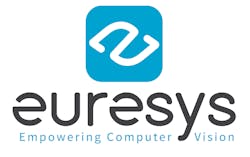In an effort to create a compelling experience for viewers at home, either on live TV or online, media companies are constantly adding features to their Live and Video on Demand (VOD) immersive video for apps and social media platforms. Augmented Reality, Virtual Reality, Extended Reality are the new buzzwords and the opportunities for imaging companies are multiple.
Stadium imaging now allows premium home viewers the ability to modify their view dynamically, moving virtually around the play action or reconstructing play action in 3D for viewer broadcast playback and subsequent play analytics.
Sports analytics is almost always 3D, it provides for example real time analysis of a baseball player’s swing in 3D space, golf swing analysis – used for pro golf training, or predictive analytics of the play action.
Further, the same imaging technologies are used in recording studios for generating multi-perspective and 3D content for a wide range of applications including immersive video for movie scene action, developing virtual advertising content, virtual reality effects for video game scene development and even immersive content for augmented reality content.
The Picture
These applications require the highest quality video stream to begin with, this means high definition and high frame rate. CoaXPress (CXP), a digital interface standard developed for high-speed image data transmission in computer vision applications, offers the required bandwidth and features.CMOS sensors and cameras requiring 30 to 40 Gbps bandwidth are now readily available. Think 65MP at 71fps for example. While these resolutions and frame rates are above the requirements of traditional broadcast video, they are necessary for video analytics, 3D volumetric video and simply to offer the choice of a large field of view. CoaXPress 2.0, at the new CXP-12 speed, supports this bandwidth with four coaxial cables. CoaXPress-over-Fiber does the same with a single fiber cable and commonly available QSFP+ transceivers.
CoaXPress is able to use the 12G SDI infrastructure already available in many arenas. The CoaXPress protocol, however, brings significant advantages over SDI. CoaXPress has a no-jitter, low-latency camera triggering and synchronization capability (the typical jitter is 4 ns with a fixed latency of about 5 μs). Moreover, the C2C-Link functionality of Euresys’ Coaxlink cards allows for precisely synchronizing cameras connected to the same Coaxlink card, to different cards in the same PC and even to different cards in distant PCs. Driven by a master Coaxlink frame grabber, all cameras can be synchronized and operate coherently based on the master’s timing.
The whole picture
Why do cameras need to be synchronized? First, triggering the cameras exposure to the refresh duty cycle of the stadium lighting ensures that high frame rate imaging used for slow motion replay occurs without any light flicker. Second, for applications reconstructing 3D scenes from multiple cameras, the cameras need to be precisely locked together to expose at exactly the same time from multiple viewpoints and get an accurate 3D reconstruction of the scene. Tight (microsecond) synchronization of the cameras is straightforward and easy to achieve with CoaXPress.
CoaXPress provides several connection options compatible with the requirements of these applications. Using coaxial cables, one, two or four CXP-12 cameras can be connected to a Coaxlink Quad CXP-12 with a maximum cable length of 40 meters. Up to eight CXP-6 cameras can be connected to a Coaxlink Octo frame grabber, in a single slot, with a maximum cable length of 72 meters.
Using fiber optics, with a standard 40GBASE-SR4 QSFP+ Optical Transceiver Module and an MTP/MPO fiber connector for multi-mode fibers, the maximum cable length can reach 150 meters. With a standard 40GBASE-ER4 QSFP+ LC DOM Optical Transceiver Module and an LC-Duplex fiber connector for single-mode fibers, the maximum cable length can reach 40 kilometers. Both options sustain a bandwidth of 40 Gbps. CoaXPress-over-Fiber is gaining market approval and several cameras using this interface are now available, they are compatible with the Euresys Coaxlink QSFP+.
Nothing but the whole picture
Additionally, beyond the already outstanding EMI performance of the Coaxial cable, the optical connectivity allows an easier deployment with no risk for interferences. And the perspective towards a realm of even higher throughputs (100 … 200 Gbps) is now open.

